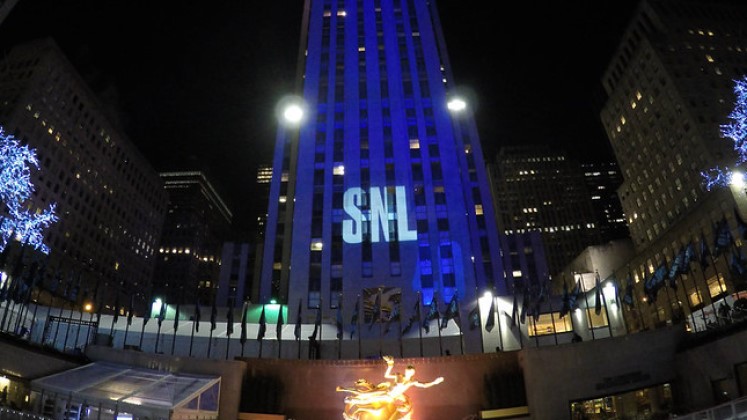 Nearly eight months before Election Day, both Donald Trump and Joe Biden have won their respective party’s nominations for the presidency. Julia Azari looks at why, despite his unpopularity with many voters, the Democratic Party has nominated the incumbent President, Joe Biden. She writes that while an incumbent president has no built-in right to be renominated, the growth in the role of political parties in presidential nominations through the 20th century – and their desire to avoid often messy primary contests – mean that there is far less freedom for alternative candidates to contest primaries in the face of a presidential incumbent.
Nearly eight months before Election Day, both Donald Trump and Joe Biden have won their respective party’s nominations for the presidency. Julia Azari looks at why, despite his unpopularity with many voters, the Democratic Party has nominated the incumbent President, Joe Biden. She writes that while an incumbent president has no built-in right to be renominated, the growth in the role of political parties in presidential nominations through the 20th century – and their desire to avoid often messy primary contests – mean that there is far less freedom for alternative candidates to contest primaries in the face of a presidential incumbent.
This article is part of ‘The 2024 Elections’ series curated by Peter Finn (Kingston University). Ahead of the 2024 election, this series is exploring US elections at the state and national level. If you are interested in contributing to the series, contact Peter Finn (p.finn@kingston.ac.uk).
As of March 12, 2024, it’s all but official: Donald Trump and Joe Biden have won the necessary delegates to secure their respective parties’ nominations. Despite news reports that this is the “rematch voters are dreading,” both the incumbent and former president have dominated their respective primary contests. What’s more, in Joe Biden’s case, he hasn’t had much competition.
Biden is an unpopular incumbent.
In some sense, this is standard. Parties basically always nominate the sitting president if they’re eligible and willing to run for reelection. But Biden has stood out to voters and commentators for a few reasons: because he was already the oldest successful presidential candidate in history when he won in 2020, there were some expectations that he might be more of a transitional figure and eschew running for a second term. Now, Biden is four years older, and despite some notable legislative accomplishments and a fairly strong economy, he’s also quite unpopular. So political scientists are finding ourselves answering the same question from our students, friends, and families: why can’t the Democrats nominate someone else?
Part of the reason lies in the fact that, like Donald Trump, Biden remains unpopular generally but pretty popular among committed Democratic partisans. Even though many Democrats say in surveys that they’d like to see another nominee, they also express high levels of approval of Biden. The prospect of picking another nominee is full of uncertainty and risk.
Presidential candidates have not always been chosen this way.
A deeper answer can be found in the structure and development of political parties in the US. After all, it’s not written anywhere that the incumbent president has the right to assume that he will be the party nominee when his term is up in four years. It used to be a lot more common for parties to nominate someone other than the sitting president. Political scientist Daniel Klinghard observes that between 1828 and 1884, renomination of the incumbent was actually fairly uncommon. During this period, party conventions nominated presidential candidates, and the flow of power was much more from local and state parties to the president than the other way around. Presidential candidates relied on the work of parties to mobilize voters and spread the word, ultimately owing their elections to robust organizations on the ground. Klinghard argues that this started to change around the 1880s, with presidents taking the lead on party issue stances. Presidents and presidential candidates also started to fundraise and campaign on their own, breaking away from their dependence on parties. (Notably, the Constitution had no formal term limits at this time. The fact that presidents tended to serve only two terms speaks to the power of informal norms and party recruitment.)
Over the twentieth century, presidential nominations became also more open to voter input. In the first presidential primaries, former president Theodore Roosevelt challenged incumbent William Howard Taft, though the party, still in control of the nomination process, ultimately chose Taft.
A few decades later, Franklin Roosevelt assumed even fuller leadership over the Democratic Party. Breaking with the tradition that presidential candidates should remain removed from the process, FDR showed up in person at the 1932 convention to accept his nomination. By 1940, he was accepting an unprecedented third term – and then a fourth in 1944. Over time, the party system has become increasingly presidency-focused and president-led.
As parties closed ranks, presidents gained power.
Changes to the nomination system that have been made have had a complicated effect. By the 1970s, both parties chose their nominees through a much more open process. Convention delegates still selected the presidential candidates, but those delegates were now chosen in primaries or caucuses open to all party members – even, in some cases, open to any voter who wanted to participate. In theory, primaries should make it easier for challengers to take their case to the voters. Notably, two of the modern challenges to sitting presidents happened in the years after nomination reform, when candidates and parties – and voters – were still figuring out how the informal rules of the system would work. In 1976, Ronald Reagan challenged incumbent Gerald Ford from the right, offering a vision rooted in the conservative movement to compete with Ford’s more moderate approach. Ford went on to defeat by Democrat Jimmy Carter. Four years later, Carter was challenged from the left by Sen. Ted Kennedy (D-MA).

“P20240221AS-1050” by The White House is United States government work
The prospect of a real, messy primary contest has arguably led to parties closing ranks around sitting presidents ahead of their reelection campaigns. Tellingly, the most recent example of this is Pat Buchanan’s bid against George H.W. Bush in 1992. Buchanan ran as a populist and conservative opponent and was a movement figure rather than an elected official. The major threat to the Bush campaign came in the New Hampshire primary, in which Buchanan won 37.5 percent of the vote to Bush’s 53. It was unlikely that Buchanan would ever actually win the nomination, or even come close. But Buchanan symbolized the dissatisfaction of conservatives with Bush, signaling weakness. What’s more, the expectation that the renomination of a sitting president would not be contested made Bush appear vulnerable in the face of an insurgent candidacy.
Why do presidential incumbents dominate?
In the decades since, several developments have made it harder to run against the incumbent president. First, the emphasis on candidates and direct democracy have contributed to the decline of parties as robust organizations that could plausibly coordinate on alternatives to the sitting president. As the national parties have taken on the role of serving candidates – especially presidential candidates – they’ve been less positioned to contest the political dominance of presidents.
The second is the difficulty of competing under the current nomination system. It takes a long time to build up a campaign organization, much less to build the name recognition to be a viable presidential candidate. The current process favors those who already have a national reputation, which means that current (and former) presidents have a major advantage over anyone else.
These factors – the difficulty of coordinating and competing – help to explain why Biden didn’t have any serious competition this year. On one level, Rep. Dean Phillips’ candidacy made sense: he resembled Biden ideologically but is decades younger. However, Phillips came up against some predictable problems: he didn’t have much of a national profile. Other Democrats viewed his candidacy as a potential threat to party unity going into a tough general election. And he had trouble getting a spot on the primary ballot in at least one state.
On the left, Biden has plenty of opposition but no opponent. Activists in several states have launched an “uncommitted” campaign to protest the administration’s policy toward Israel and Gaza. But no prominent candidate on the left has emerged. One potential reason for this is that progressive politicians see Biden as the best chance for advancing their policy priorities in the White House, and don’t want to undermine their political status by challenging the incumbent. This, again, speaks to expectations about the deference shown to sitting presidents within their parties.
The party and presidential power have left Biden as the Democrats’ only option.
Some commentators, including Ezra Klein of The New York Times, have suggested that, because it’s too late for a meaningful primary challenge to Biden, one approach would be to have the delegates to the Democratic National Convention choose a replacement. But as Jamelle Bouie points out, this method for selecting presidential candidates hasn’t been seen as viable or democratically legitimate for decades. There are good reasons for this doubt – but it also means that the main alternative to a long and expensive primary contest is effectively closed off.
The bottom line is that parties no longer have the strength or legitimacy to act as a counterweight to the influence of the presidency, and that includes the expectation that parties will renominate sitting presidents. Reforms meant to open up the presidential nomination process to voters have made it that much more difficult to challenge an incumbent from within the party tent. Moving toward more direct democracy was supposed to give voters more sway over presidential nominations. But combined with a party system already influenced by the president, the process has made it harder for voters to have a meaningful choice when an incumbent president is seeking reelection.
- Please read our comments policy before commenting.
- Note: This article gives the views of the author, and not the position of USAPP – American Politics and Policy, nor of the London School of Economics.
- Shortened URL for this post: https://wp.me/p3I2YF-dI7






